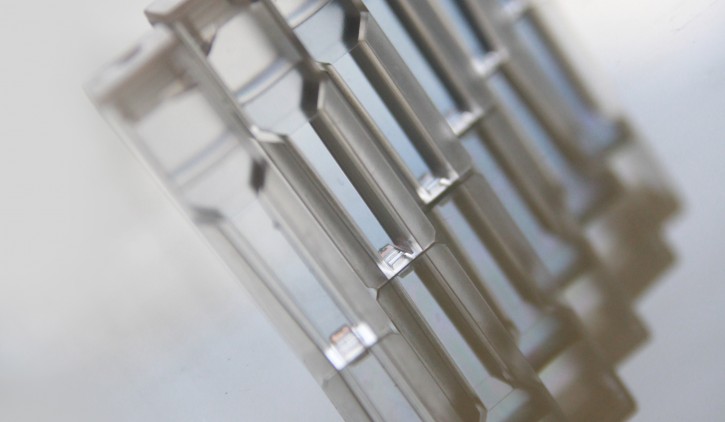
Plant proteins are sometimes associated to functionality, nutritional and organoleptic deficiencies which could make difficult their use as food ingredients. To solve or reduce those problems different strategies can be applied.
4.3.1 Enhance functionality
The functional properties of proteins depend of the structure, charge and hydrophobicity, therefore changes of those characteristics would produce changes of functional properties so proteins are subjected to physical chemical or enzymatic treatments.
Some physical chemical treatments can be used to modify proteins structure. Modifications of the pH of the media will produce variation of charges of proteins and depending the pH irreversible changes of the structure that can increase functionality (Ventureira et al., 2012). Thermal treatments can be used to expose hydrophobic regions of proteins and produce different textures (gels, microgels, viscosity, fibers). High hydrostatic pressure (up to 1000 MPa) was used to modify functional properties of soybean proteins enhancing gelification and emulsifying properties (Messens et al., 1997).
Proteases are used to hydrolyse peptide bonds and reduce the size of proteins. This reduction of size usually yields to increase solubility and increase of the flexibility of the polypeptides structure that can lead to a better functionality. Controlled enzymatic hydrolysis increases solubility, emulsifying and foaming properties of wheat gluten (Popineau et al., 2002), soybean (Zhao and Hou, 2009), pea (He et al., 2012), rapeseed (Chabanon et al., 2007), amaranth (Ventureira et al., 2010), sunflower (Rodriguez Patino et al., 2007) or chickpea (Mokni Ghribi et al., 2015).
Some chemical modifications in proteins can be the acylation (e.g. succinylation), blocking amine group or hydroxyl group of lateral chains by acyl residues; phosphorylation, introducing acid groups into a protein; glycosylation, by attaching a sugar molecule to the protein; deamidation, produced by heat and extreme pH that transforms glutamine and asparagine in their acids increasing charge; esterification by reaction of carboxyl groups with alcohols or hydroxyl groups with carboxylic acids. Most of these chemical modifications are conducted at laboratory scale without any industrial application.
4.3.2 Enhance nutritional value
Plant protein sources may vary from animal sources in terms of amino acid composition, digestibility and antinutritional factors. Even if it is often mentioned that plants can provide all human protein needs there still exists the mistaken belief that they are nutritionally inferior to animal proteins. Plants proteins can completely provide for human amino acid needs (Millward, 1999). Sometimes they have to be crosscomplemented to reach sufficient essential amino acid content (e.g. association of cereals and pulses to enhance lysine content). Concerning digestibility of plant proteins, once plant-cell-wall constituents are removed (as in isolates or concentrates), the inherent digestibility of plant proteins may be indistinguishable from that of animal proteins. Sometimes the presence of anti-nutritional factors can limit digestibility (beans) (Millward, 1999). Different anti-nutritional factors can be found in plant proteins that can produce negative effect on protein or carbohydrates digestion as lectins, phenolic compounds, saponins, trypsin, chymotrypsin or amylase inhibitors or negative effect on the utilisation of minerals as glucosinolates, phytic acid or oxalic acid. Some anti-nutritional factors can affect vitamins or over-stimulate the immune system (allergenic) (Huisman and Tolman, 1992). Many of these factors are thermosensitive and eliminated by thermal treatments including cooking. Others can be reduced by washing or by differential solubilisations (depending the characteristics of molecules). Enzymatic treatments can be also considered to decrease the antinutritional content or improve the biodisponibility of plant proteins using for example cocktails of hemicellulases and cellulases on the ram material.
4.3.3 Enhance taste
Concerning organoleptic properties of plant proteins objectionable flavors can arise when some grains are processed into protein isolates (Rackis et al., 1979). Pure proteins do not have off flavors but they appear normally during the milling because the cell breaking put in contact different compounds or molecules that have responsibility in the generation. Normally are associated to oxidative deterioration of unsaturated fatty acid in protein-bound lipids that yields small components that can bound to proteins. These molecules are responsible for the grassy/beany flavor (e.g. soybean).Regulating process conditions those reactions are reduced and flavor enhanced. Also flavors can be masked by the use of different components. Several patents address this issue.
5 Conclusion and perspectives
The continuous word population growth induces an increase of total protein demand based on plant sources complemented with animal sources. The world population is facing two distinguished nutritional transitions: the desire to eat more meat in countries where population gross domestic product growth and the progressive switch from animal to plant proteins diet in developed countries as EU and USA.
Diverse strategies must be combined to meet these nutritional challenges. Using as model the worldwide success of soy protein isolates, R&D investments in agriculture and agrofood technology have to be considered to expand the production of protein-rich seeds, to better valorise the already consumed plant protein fractions and to promote new generation of protein extracts from agro resources like oilseed meals in human nutrition.
To boost the market uptake of plant based proteins, agrofood-industries and academics must pool their respective expertise to deliver plants proteins with better, or at least comparable characteristics (performance, price, availability, and sustainability) than animal proteins. The specific valorisation of pulses and oilseed proteins fraction requires to create oil extraction processes which preserve native proteins structure to get new foaming, emulsifying or gelling functionalities, or result in hydrolysed proteins with high nutritional value adapted for infant, adult or elderly people nutrition. To address the diversification and enrichment of current offer in vegetal proteins, private companies and public institutes have to initiate common pragmatic R&D programs to innovate in wet and dry fractionations of plants or create in vitro models to evaluate proteins digestibility and allergenicity. The aim is to be able to anticipate the impacts of proteins production process changes on the interaction of those proteins with human (or animal) metabolism. Moreover, all efforts towards better valorisation as human food of proteins extracted from pulses and oilseeds will have to be conducted in parallel with promoting animal feed integrative models: dedicate high nutritional value plant proteins to human and base livestock productions on remaining by-products.
The increased awareness regarding plant protein valorisation resulted in the creation by major agro-industries and academic institutes of the open platform IMPROVE. IMPROVE proposes a combination of competencies and equipment to:
– Boost plants natives proteins extractions combining dry and wet fractionations from lab up to industrial pilot scale.
– Create chemo-enzymatic hydrolysates to increase nutritional, functional and biological properties of plant proteins.
– Understand plant protein behaviour in food matrix to substitute partially or totally animal proteins.
– Identify and anticipate hurdles regarding plant based proteins incorporation in food.
Source : plant protein extraction
